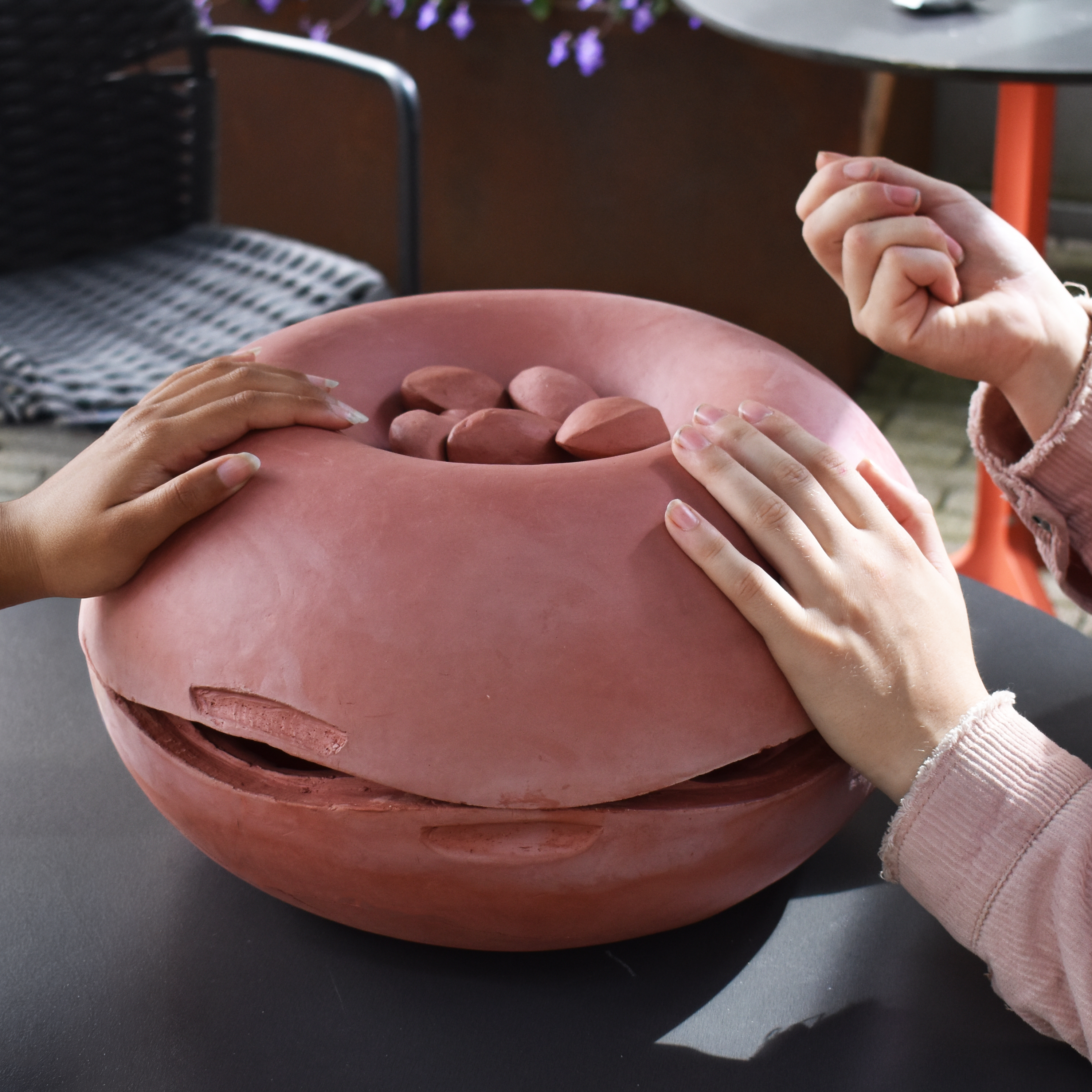
In winter, when there are limited free spaces for communities to come together, loneliness becomes increasingly common. By placing Thermae on tabletops, both indoors and outdoors, it fosters community by encouraging closeness and conversation in a comfortable environment.
Throughout the Roman Empire, there were bathhouses in every village. These were places for the community to socialise, exercise, and share the experience in the comfort of heat. Across cultures and eras, people have gathered around heat. Whether it is fires, stoves or bathhouses, it became a social ritual. In collaboration with the province of South Holland and partners across the Roman Limes, a historic frontier of the Roman Empire,
Thermae consists of a terracotta table heater inspired by the heating system used in the bathhouses. The terracotta heater’s shape is designed to invite people to come around it and touch it to feel the warmth. Inside it, candles are lit as the heat is directed towards the dome, where heat is transferred to the terracotta hand warmers. When it’s time to extinguish the candles, the air flow is restricted by rotating the upper half to close the holes. If placed in community spaces, it mirrors the social function of the bathhouse of bringing people together, while materialising the technology in a modern context.
As Kris de Decker wrote, “Heating people, not spaces” is an approach to heating technology which prioritises thermal comfort in spaces through radiative heat. The technology of the bathhouse works with the principle of radiative heat, which has been used for centuries. By reimagining Roman heating technology for today’s community spaces, Thermae weaves the times of then and now, proposing an alternative, more communal approach to modern heating systems.
Throughout the Roman Empire, there were bathhouses in every village. These were places for the community to socialise, exercise, and share the experience in the comfort of heat. Across cultures and eras, people have gathered around heat. Whether it is fires, stoves or bathhouses, it became a social ritual. In collaboration with the province of South Holland and partners across the Roman Limes, a historic frontier of the Roman Empire,
Thermae consists of a terracotta table heater inspired by the heating system used in the bathhouses. The terracotta heater’s shape is designed to invite people to come around it and touch it to feel the warmth. Inside it, candles are lit as the heat is directed towards the dome, where heat is transferred to the terracotta hand warmers. When it’s time to extinguish the candles, the air flow is restricted by rotating the upper half to close the holes. If placed in community spaces, it mirrors the social function of the bathhouse of bringing people together, while materialising the technology in a modern context.
As Kris de Decker wrote, “Heating people, not spaces” is an approach to heating technology which prioritises thermal comfort in spaces through radiative heat. The technology of the bathhouse works with the principle of radiative heat, which has been used for centuries. By reimagining Roman heating technology for today’s community spaces, Thermae weaves the times of then and now, proposing an alternative, more communal approach to modern heating systems.



